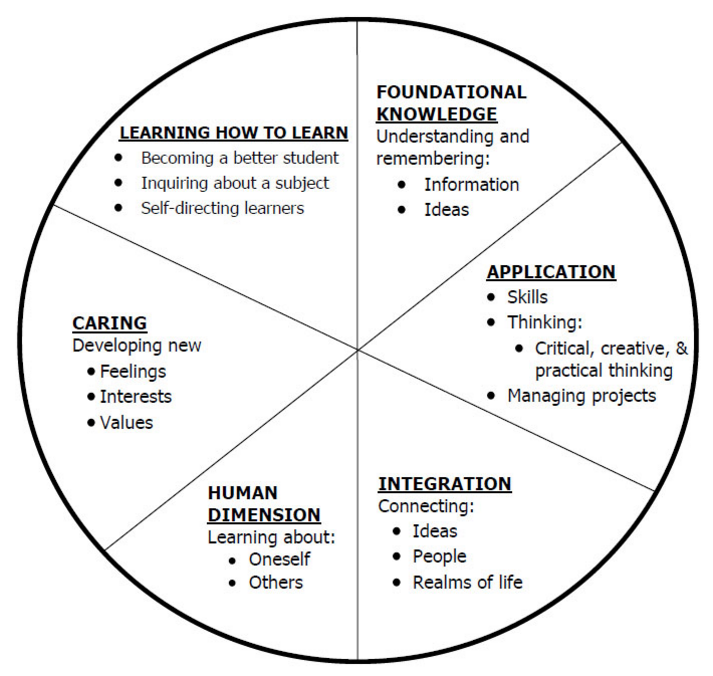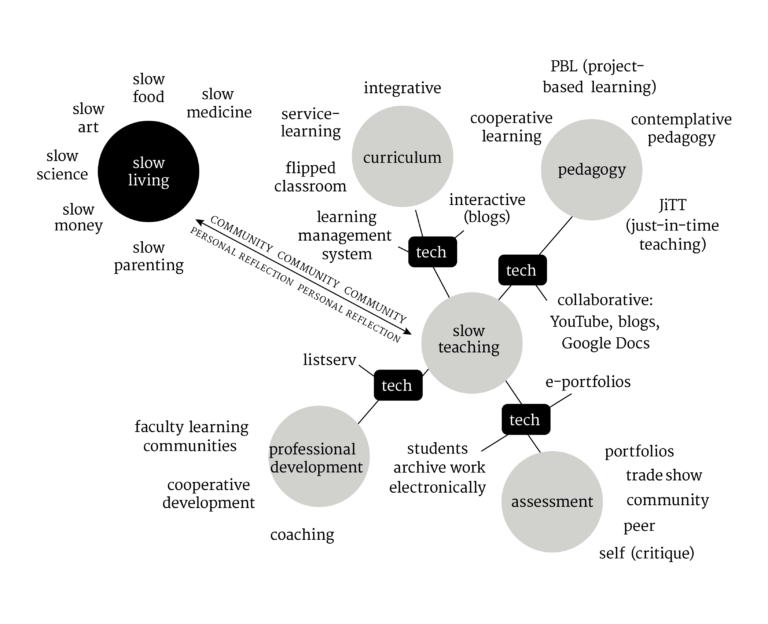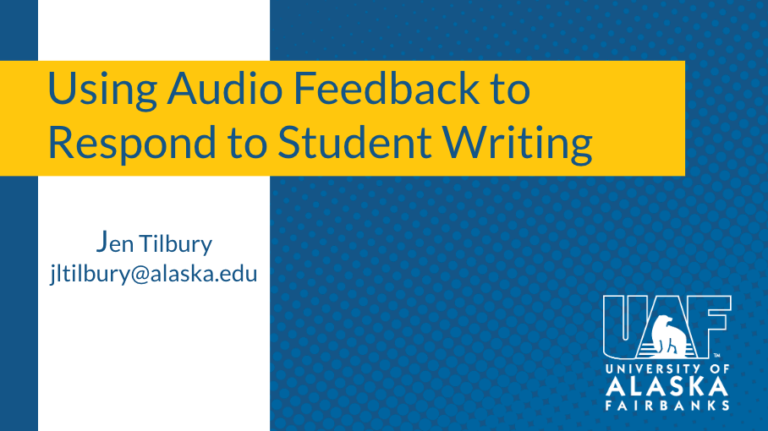Creating significant learning experiences
Our purpose as instructors is to facilitate new student understandings. But, what are understandings? Are there different kinds? It seems they can be simple, such as remembering the elements of the periodic table, or extremely complex, such as discovering new knowledge about oneself and one’s relationship with the world. Several scholars have tried to create taxonomies of understandings or taxonomies of educational goals. The most well known is Bloom’s Taxonomy of the Cognitive Domain (1956) later revised by Anderson (2001). It features the well known hierarchy of categories which attempts to capture the spectrum of learning processes: Remember, Understand, Apply, Analyze, Evaluate, Create.

Fink’s Taxonomy of Significant Learning (2003) challenged the hierarchical nature of Bloom’s model by presenting a more holistic approach including aspects like ‘Human Dimension’ and ‘Caring: Developing new feelings’. When viewing Fink’s model, it is somewhat humbling to see much of the traditional classroom educational experience fits within the ‘Foundational Knowledge’ sector. Many of us hope our students become better at learning how to learn and become self-directed learners. Few of us identify these outcomes as specific goals or design to achieve them. Most of us want our students to develop new connections between ideas, people, and realms of life (Integration) and we want students to ultimately develop new feelings, interests, and values or at least think about the ones they already possess (Caring). How do we design for these explicit outcomes rather than just hope they occur?
The first step is to recognize understandings are complicated and diverse. There are superficial understandings and deeper, more profound understandings. All can be valuable but it is important to be explicit in your design goals. Ask yourself what kind of understandings you’d like your students to achieve. Inventory what you’ve designed for. How do your existing intended objectives compare to the categories within Fink’s model? Do you have the objectives you want? Once you’ve selected your objectives, consider diagramming how course learning activities and course objectives relate. Do you have activities that support your hoped-for objectives? Are you assessing your intended student outcomes?
Clearly identify your intended objectives, then consider a wider and often more engaging range of activities to achieve them. Journals, reflection pieces, presentations, papers, skits, debates, and discussions are effective modes for students to demonstrate more complicated understandings. Remember that there are often multiple ways for students to show similar understandings. If you want students to empathize with characters or figures from within your discipline, your students could write a diary in the voice of that persona, or play an immersive role-playing game, perform a skit, deliver a presentation or engage in a debate as that person.
Want to learn more about Fink’s taxonomy? Read this brief white paper: ecampus.uaf.edu/go/finks. Fink’s taxonomy, and learning taxonomies in general, can be very useful tools for the course design and learning experience evaluation process. Yearning for some of these more elusive outcomes, but don’t know quite how to design your way to get there? Come by Open Lab where we have instructional designers ready to assist with this challenging task.
REFERENCES
Anderson, L. W. and Krathwohl, D. R., et al (Eds..) (2001) A Taxonomy for Learning, Teaching, and Assessing: A Revision of Bloom’s Taxonomy of Educational Objectives. Allyn & Bacon. Boston, MA:Pearson Education Group.
Bloom, B. (ed.) (1956) Taxonomy of Educational Objectives, the classification of educational goals Handbook I: Cognitive Domain New York: McKay.
Fink, D.L., (2003) Creating significant learning experiences: An integrated approach to designing college courses. San Francisco: Jossey’Bass.

Owen Guthrie, M.A.
Former Executive Director, CTL
Owen has over thirty years experience serving teaching and learning in higher education.



